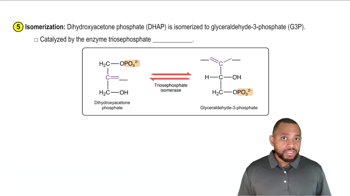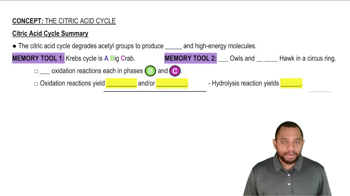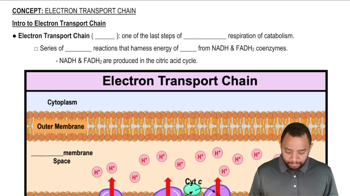What is the ATP energy yield associated with each of the following?
a. FADH2 → FAD
 Verified step by step guidance
Verified step by step guidance Verified video answer for a similar problem:
Verified video answer for a similar problem:



 2:46m
2:46mMaster Aerobic Respiration Summary Concept 1 with a bite sized video explanation from Jules
Start learning